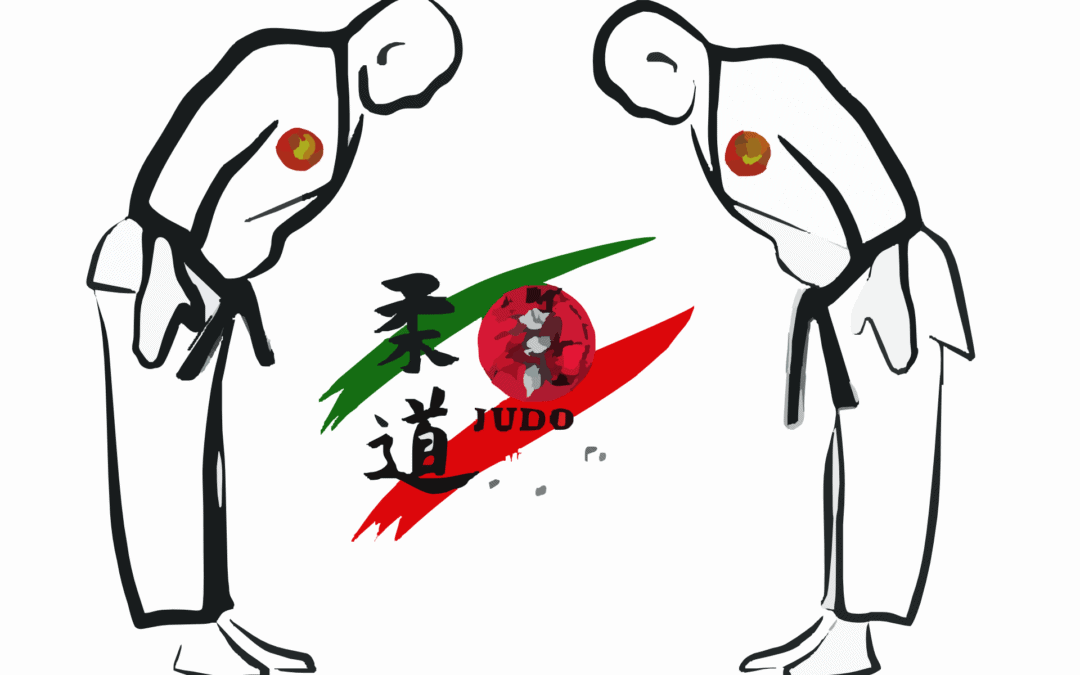Judo is a Japanese martial art and Olympic discipline. It was created relatively recently, in 1882, and has since evolved into a highly popular martial art with a philosophy followed by many across the world. Judo is traditionally practiced in a dojo and involves specific etiquette that revolves around bowing as a gesture of respect and humility.
In general, when bowing in judo, you will usually say ‘onegaishimasu,’ which can be approximately translated as ‘please’ and interpreted as an appeal to receive learning from practice or even from competition.
If you’re interested in bowing etiquette in judo, read on to find out more about the intricacies of this discipline.
Table of Contents
What Do You Say When Bowing in Judo?
Judo is a modern martial art that revolves around grappling an opponent, but the discipline is based entirely on respect for the opponent and the sport. Bowing is a gesture meant to show this respect and will be performed several times during practice or competition.
‘Onegaishimasu’ is what you will usually say while bowing in judo because you will be showing your respect and your eagerness to learn from the experience, whether it is a practice class or a contest.
While this word can be translated as an equivalent of ‘please,’ it is also a request made to the instructor, the training partner, or the opponent. It shows a wish to work with the other person and to learn from them.
Bowing in Judo
Depending on how traditional the dojo is, there will be various complexities to the bowing ‘rei’ process based on hierarchy. Standard standing bowing (‘ritsurei’) will occur whenever you enter or leave the training area. This marks the transition between two different spaces. When you get on the mat, judo becomes your sole focus.
To mark the opening sequence of the session, everyone present will be lined up in order of rank, with the instructor (‘sensei’) at the front. Everyone will then be commanded (‘seiza’) to take a seated position on their heels, at which point a formal seated bow (‘zarei’) will be done to the command ‘shonen ni rei,’ which translates as ‘bow to the front.’
You will find the highest point at the front of the dojo, called ‘kamiza.’ This is a place of honor and should be respected while bowing. Once you have bowed to the front, you will then bow to the sensei (‘sensei ni rei’), which is when you will get to say ‘onegaishimasu’ to establish the start of that learning experience.
At the end of the session, another formal bow will take place, usually toward the kamiza (‘kamiza ni rei’) and then to the instructor once more. While bowing to the instructor, you may say ‘arigatou gozaimashita’ or ‘thank you’ to mark your gratitude for what you have learned.
The most important thing to keep in mind about judo while practicing or competing is that respect is essential, and the act of rei is one of the most crucial aspects of showing your understanding of the philosophy behind the sport.
What Are Other Judo Etiquette Rules?
Apart from the bowing aspect, you should be aware of several other regulations while in the dojo. Knowing the etiquette will help you show respect to your fellow students, instructors, referees, or opponents, depending on the situation.
These are some of the things to keep in mind while on the mat:
- Avoid arriving late, and if you do, always bow to the sensei before joining the others.
- When you wish to train with someone, in particular, request this respectfully, usually by saying ‘onegai shimasu.’
- Remember to thank them once you are done (‘domo arigato’).
- Remember that you are not allowed to chew gum or drink or eat anything while on the mat.
- Keep your nails trimmed at all times to avoid inflicting accidental cuts on others.
- The routine is slightly different in competitions: bowing will be done before entering the mat, then at the line. The competition begins once the line is crossed. Once it ends, you will bow to your opponent and then once more before leaving the mat.
- If you visit other dojos, etiquette is even more essential, as you will be representing your usual one. Ask for permission to train, pay attention, and work hard. Remember to enquire whether there are any visitor fees to be paid.
Conclusion
When bowing in judo, you show respect and welcome the learning experience by saying ‘onegaishimasu.’ You can also say ‘arigatou gozaimashita’ while doing the final bow to the instructor at the end of the session to show gratitude for what you have learned during the session.
Dojo etiquette is an essential part of judo, so you should be aware of the rules.

